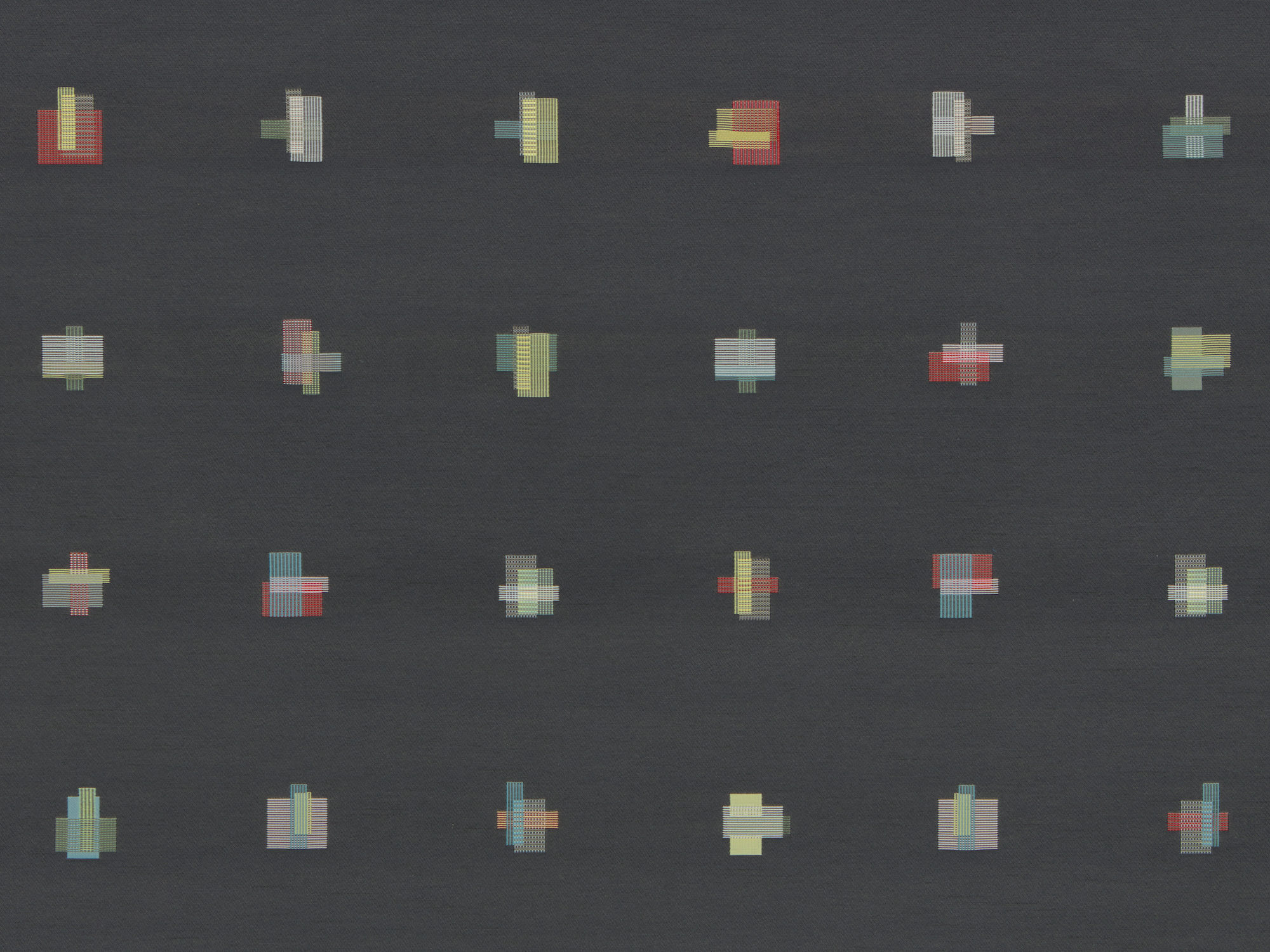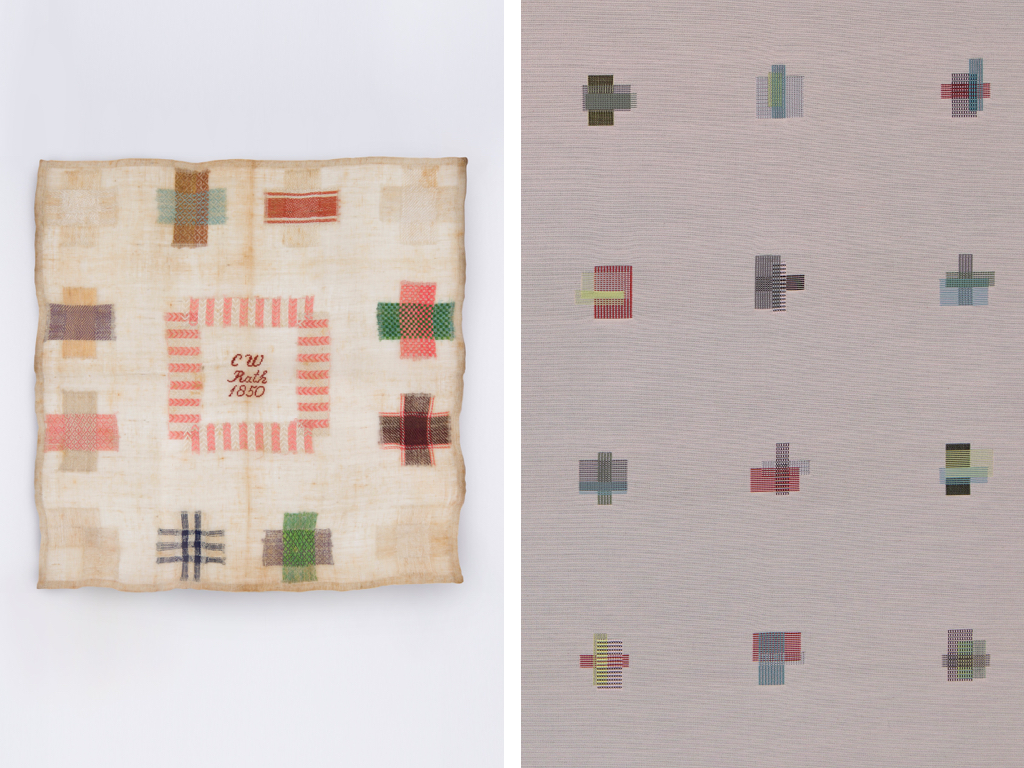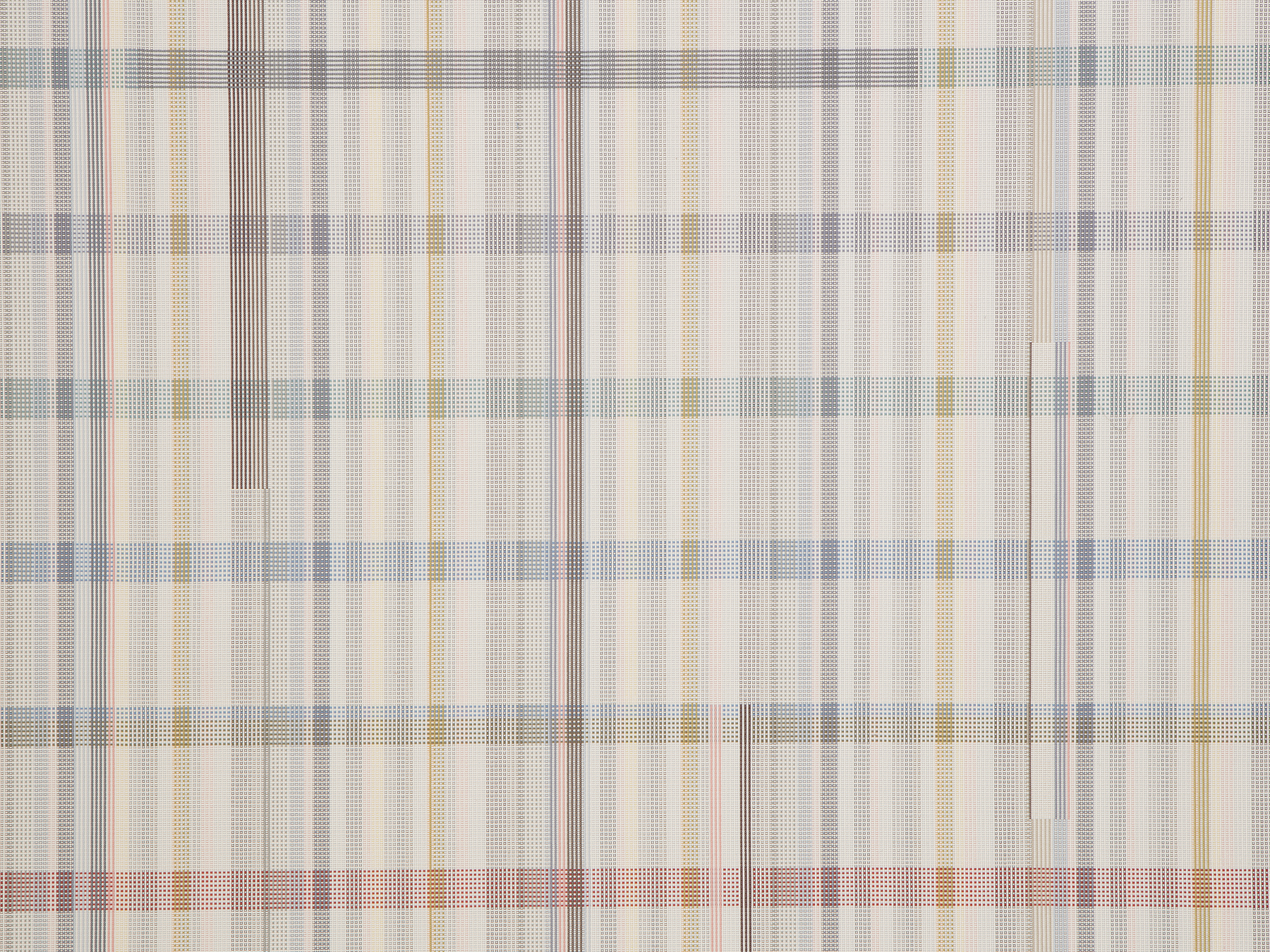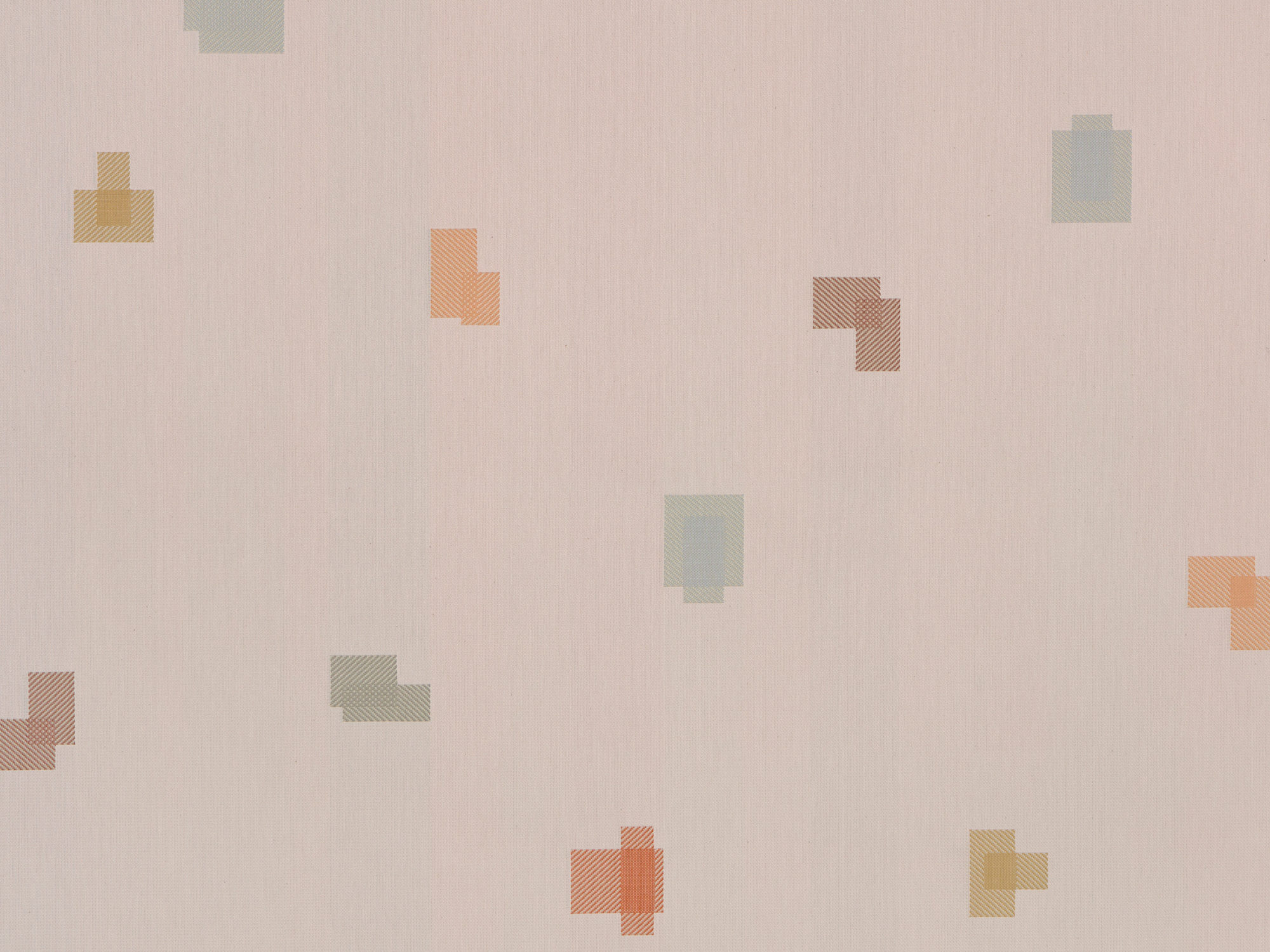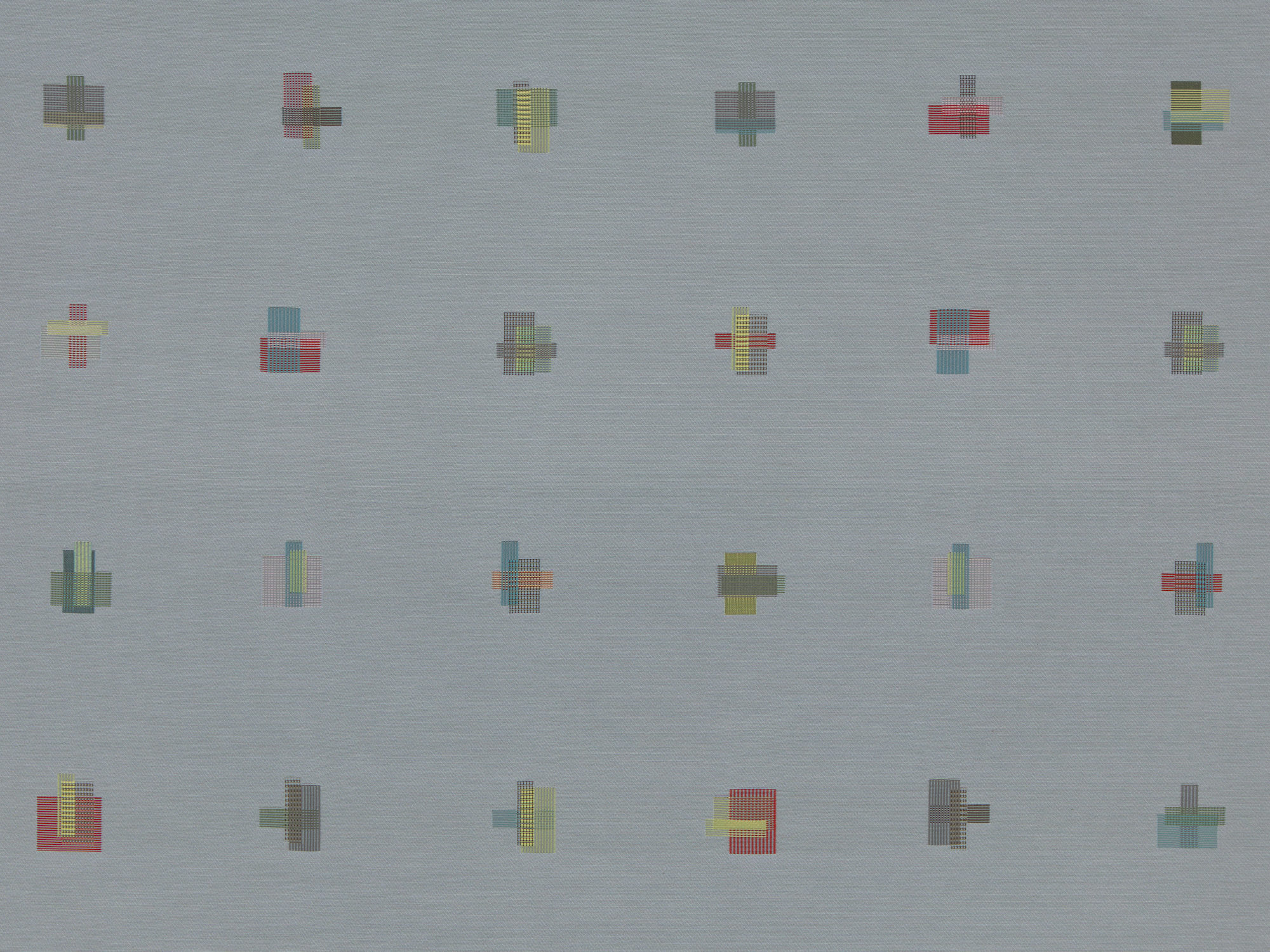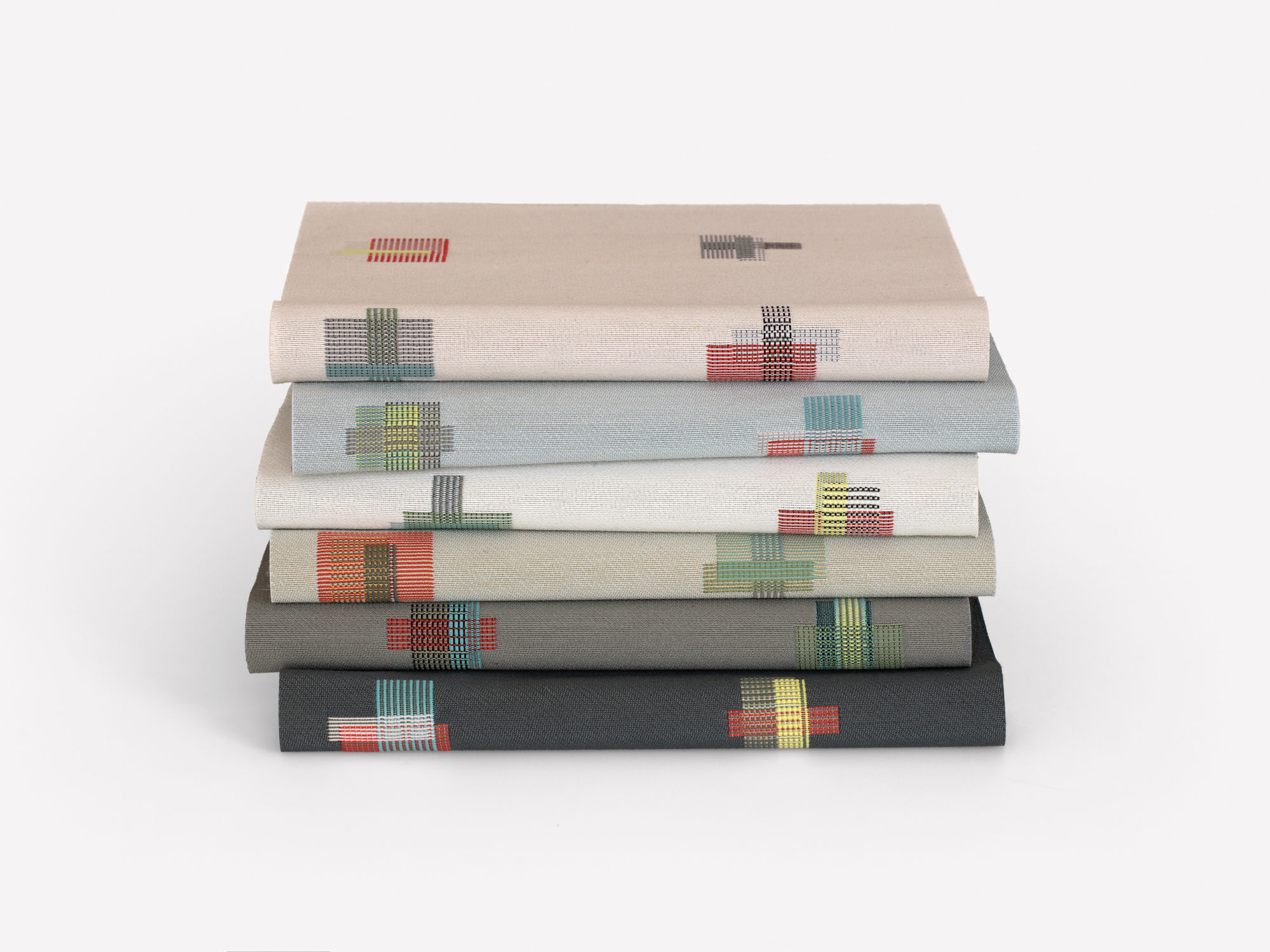Let’s talk about darning. More than a thing your grandma did to socks, it’s a method of filling in a hole in a garment by weaving thread across it with a needle. Perfecting it became a popular craft during the 17th and 18th centuries in Holland, where girls made darning samplers—pieces of fabric, usually the size of a laptop, stitched with around a dozen different patterns—to practice their embroidery skills, which in turn gave them a source of supplementary income. Darning samplers are striking, marked by brightly colored thread (which made it easier to check for accuracy) and detailed, overlapping geometric patterns. They resonated with Stefan Scholten and Carole Baijings, Amsterdam-based textile designers whose work, characterized by blocks, grids, and abstract plaids, actually looks a lot like a darning sampler—even though they’d never heard of the custom until an executive from the textile company Maharam introduced them to it in 2016 (and they’re from Holland!). Scholten and Baijings decided to reinterpret the tradition into a collection of their own, which debuts this week at Maharam’s showroom in the Chicago Merchandise Mart during the NeoCon design fair.
The three-piece fabric range was informed by two historical references: one from 1751 and one from 1850. The best pattern (pictured above) is called simply Darning Sampler, sewn into a textile that shows off Scholten and Baijings’s prowess as colorists and as translators of an idea into fabric. Look closely and you’ll see teeny X’s and box stitches that link the modern textile to the centuries-old ones that inspired it.
